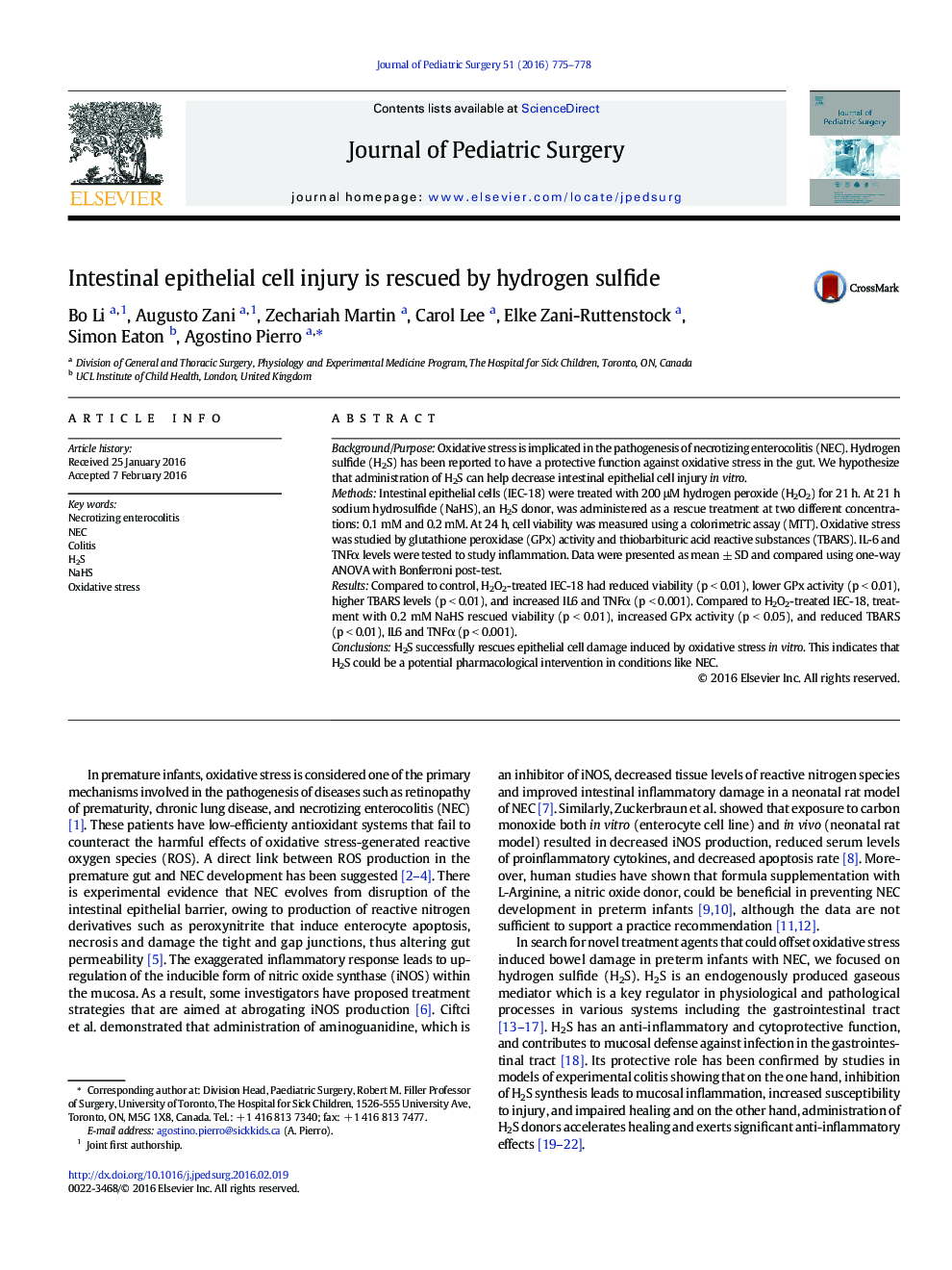| Article ID | Journal | Published Year | Pages | File Type |
|---|---|---|---|---|
| 6216569 | Journal of Pediatric Surgery | 2016 | 4 Pages |
Background/PurposeOxidative stress is implicated in the pathogenesis of necrotizing enterocolitis (NEC). Hydrogen sulfide (H2S) has been reported to have a protective function against oxidative stress in the gut. We hypothesize that administration of H2S can help decrease intestinal epithelial cell injury in vitro.MethodsIntestinal epithelial cells (IEC-18) were treated with 200 μM hydrogen peroxide (H2O2) for 21 h. At 21 h sodium hydrosulfide (NaHS), an H2S donor, was administered as a rescue treatment at two different concentrations: 0.1 mM and 0.2 mM. At 24 h, cell viability was measured using a colorimetric assay (MTT). Oxidative stress was studied by glutathione peroxidase (GPx) activity and thiobarbituric acid reactive substances (TBARS). IL-6 and TNFα levels were tested to study inflammation. Data were presented as mean ± SD and compared using one-way ANOVA with Bonferroni post-test.ResultsCompared to control, H2O2-treated IEC-18 had reduced viability (p < 0.01), lower GPx activity (p < 0.01), higher TBARS levels (p < 0.01), and increased IL6 and TNFα (p < 0.001). Compared to H2O2-treated IEC-18, treatment with 0.2 mM NaHS rescued viability (p < 0.01), increased GPx activity (p < 0.05), and reduced TBARS (p < 0.01), IL6 and TNFα (p < 0.001).ConclusionsH2S successfully rescues epithelial cell damage induced by oxidative stress in vitro. This indicates that H2S could be a potential pharmacological intervention in conditions like NEC.
